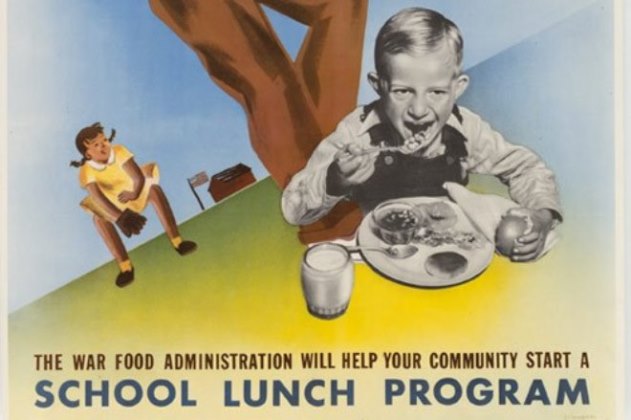The National School Lunch Program (NSLP) began in 1946 during Harry Truman’s presidency. The purpose was to reduce nutritional deficiencies in the enlisting military as a “measure of national security”. After all, you can’t have a robust military when those enlisting aren’t well enough to even qualify. Things have changed over the decades. I’m sorry Mr. President, but lunch isn’t what it used to be. I was on the lunch program as a child. Lunch consisted of a featured food, fruit, a vegetable, and milk. I hit the high life when my middle school included a salad bar! Upon entry into high school, however, I saw a new trend emerge. Instead of a cafeteria, the school had booths that served burgers and fries. And it wasn’t cheap, which was incentive enough for me to bag my own lunch. Nowadays, foods that were once made from scratch have now been replaced with Pizza Hut and Taco Bell. What happened?
In an effort to increase student participation in the lunch program, schools enlisted the help of familiar fast food companies. As the popularity of this trend grew, so did student waistlines. Once this trend established itself, schools no longer needed cooking equipment so they were removed. As the quality of food has declined, so too has academic performance in many schools. A 2010 study of 34 countries showed that we ranked poorly particularly in math and science.
On an episode of Anthony Bourdain’s Parts Unknown, they visit an elementary school in Lyon France, where the chef spends less per child than the average American elementary school, only these kids aren’t eating processed, preformed, packaged food. Food is served on plates rather than Styrofoam trays. Everything is made from scratch and the only beverages are milk and water. The featured lunch was pumpkin soup, fresh salad greens, homemade crème fromage blanc with chocolate and orange slices for dessert. The kids were ravenously enjoying several helpings of soup…something rather unheard of in the U.S. What a wonderful experience to be exposed to such culinary diversity at that age!
Watching the children’s demeanor on the show was revealing. These were bright-eyed, inquisitive and focused children that weren’t hyperactive, overstimulated, or misbehaved. Considering the number of cases in the US of children with ADD and behavioral issues, one might wonder if malnutrition is to blame. A paper written by Rita Rausch is a study on how junk food or unbalanced diet affects brain function.
Is the key component to unlocking the potential of brilliant young minds within what they’re being fed? If this is indeed the case, perhaps it’s high time we revisit the lunch program with new vigor and bring back our lunch lady.

